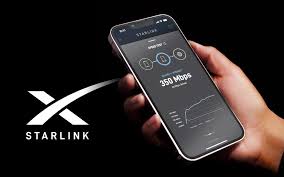
Starlink is Coming to India: What Does This Mean?
India is on the verge of a major internet revolution with the anticipated entry of SpaceX’s Starlink. The satellite-based internet provider promises high-speed connectivity, especially for rural and remote regions. While major cities enjoy fibre broadband, many areas still struggle with reliable internet. This service aims to bridge the gap with satellite technology.
However, before it can officially launch in India, regulatory approval from the government is required. Reports suggest that partnerships with Reliance Jio and Bharti Airtel may help in this process.
How Much Will Starlink Cost in India?
Official pricing has not been announced yet. However, its existing plans in Bhutan provide a reference point. The service currently offers two main plans:
- Residential Plan: Costs BTN 4,200 per month (approx. Rs 4,203) and provides unlimited data.
- Residential Lite Plan: Costs BTN 3,000 per month (approx. Rs 3,002) and offers unlimited deprioritized data, meaning speeds may slow during peak hour
Reports indicate that the expected pricing in India may range between Rs 5,000 and Rs 7,000 per month, which is significantly higher than the average broadband cost in the country. Most Indian users pay between Rs 400 and Rs 600 per month for broadband services.
The Heavy Cost of Hardware
One of the biggest challenges for Indian consumers will be the high upfront cost of hardware. The company offers two types of hardware:
- Mini Kit: A portable, backpack-friendly device with a built-in WiFi router. It offers speeds over 100 Mbps. Cost: BTN 17,000 (approx. Rs 17,013)
- Standard Kit: A more advanced setup with a Gen 3 router designed for stable residential connections. Cost: BTN 33,000 (approx. Rs 33,027)
In India, reports suggest hardware costs may vary between Rs 20,000 and Rs 38,000, making it a steep investment.
Is It Viable for Indian Users?
The promise of high-speed internet is attractive, especially for people in rural areas. However, pricing remains a major barrier. Broadband services from JioFiber and Airtel Xstream offer unlimited high-speed internet at a fraction of the expected cost.
Additionally, satellite-based internet has some limitations. Weather conditions can affect connectivity, and latency can be higher compared to fibre broadband. Users who live in cities with access to stable fibre broadband may not find this a good investment. However, for villages and remote locations with little or no broadband, this technology could be a game-changer.
How Can It Be More Affordable for India?
For this service to succeed in India, it needs to lower its prices or offer flexible payment plans. Government partnerships could also help bring down costs. If the company collaborates with Digital India initiatives, it may receive subsidies to make the service affordable.
A possible India-specific pricing strategy could help attract users. If subsidized rates for rural areas are introduced, wider adoption could be possible.
Final Thoughts: Should You Get Starlink?
This is an exciting option for people in areas with no reliable broadband. However, for urban users with access to JioFiber, Airtel Xstream, or ACT Broadband, the high cost may not justify switching.
For now, Starlink’s future in India depends on its ability to navigate regulatory approvals and adjust pricing to match Indian consumer expectations. If the company offers affordable plans, it could transform India’s internet landscape.
Would you pay Rs 4,000 per month for Starlink, or is it too expensive? Let us know your thoughts!
